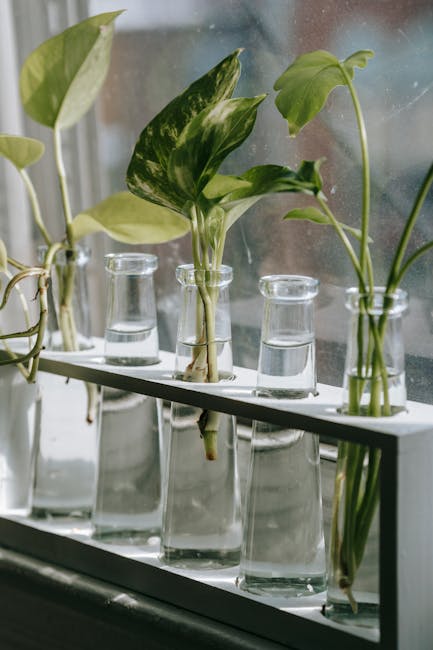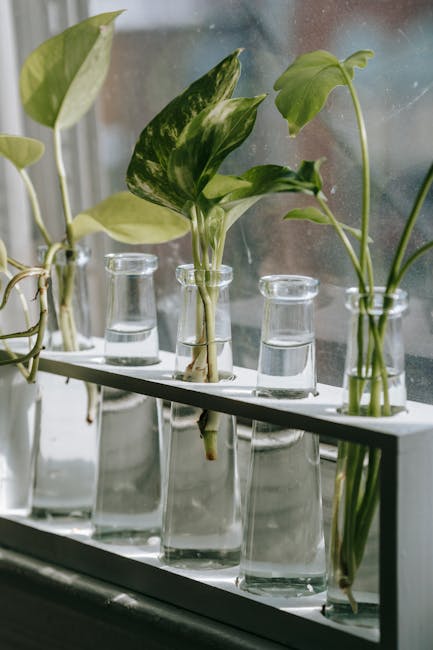How to Propagate Snake Plants in Water: A Step-by-Step Guide for Stunning Success
Snake plants, also known as Sansevieria trifasciata, are incredibly popular houseplants due to their hardiness, low-maintenance nature, and air-purifying qualities. But what if you want to expand your collection of these resilient beauties without spending more money? The answer is propagation! And one of the easiest and most rewarding methods is propagating snake plants in water. This comprehensive guide will walk you through the process, ensuring your success in growing new snake plants from cuttings.
Why Propagate Snake Plants in Water?
Water propagation offers several advantages over propagating in soil:
- Simplicity: It’s a straightforward process, requiring minimal materials and expertise.
- Faster Root Development (Potentially): Many find that roots develop quicker in water, leading to faster growth.
- Easy Monitoring: You can easily observe root growth and adjust your approach as needed.
- Reduced Risk of Rot: While still a possibility, the risk of root rot is minimized compared to soil propagation if proper care is taken.
Choosing the Right Cutting
The success of your propagation hinges on selecting a healthy cutting. Here’s what to look for:
- Healthy Mother Plant: Start with a vibrant, disease-free snake plant.
- Mature Leaf: Choose a leaf that’s fully developed and at least 4 inches long. Avoid using damaged or diseased leaves.
- Sharp Cut: Use a clean, sharp knife or pair of scissors to make a clean cut. Jagged cuts increase the risk of rot.
Step-by-Step Guide to Water Propagation
Let’s dive into the process:

1. Prepare the Cutting
Once you’ve selected your leaf, cut it cleanly from the mother plant. Allow the cut end to callous over for at least 24 hours. This step helps prevent rot by sealing the wound.
2. Choose Your Vessel
Select a clean glass or jar that’s tall enough to submerge the bottom inch or two of your cutting. Make sure the vessel is clean to minimize the risk of bacterial contamination.
3. Prepare the Water
Use clean, filtered water. Tap water is fine but letting it sit overnight to allow chlorine to dissipate is recommended. Avoid using distilled or softened water as they lack essential minerals needed for growth.
4. Submerge the Cutting
Carefully place the cutting into the water, ensuring only the lower inch or two is submerged. The rest should remain above the waterline. If the leaf tends to float, you might use a small weight to keep it gently submerged.
5. Placement and Light
Place the vessel in a location that receives bright, indirect light. Avoid direct sunlight, which can scorch the leaves. A south-facing window with a sheer curtain is ideal.
6. Water Changes
Change the water every 2-3 days. This prevents bacterial growth and keeps the water fresh. Use clean water every time. Adding a small amount of activated charcoal can help purify the water and inhibit bacterial growth.
7. Root Development
You should see roots start to develop within a few weeks to a couple of months. Be patient; the time it takes varies depending on the environmental conditions and the size of the cutting.
8. Planting in Soil
Once you have a well-developed root system (at least 2 inches long), it’s time to plant your new snake plant in soil. Choose a well-draining potting mix designed for succulents and cacti. Gently plant the cutting, ensuring the roots are spread out and covered with soil. Water lightly after planting.

Troubleshooting Common Problems
While water propagation is generally simple, some issues might arise:

- Rot: If you notice the base of the cutting turning mushy or black, it’s likely rotting. Immediately remove the cutting from the water, trim the affected area with a sterilized blade, and start again with a new cutting. Ensure proper water changes to prevent this.
- Slow Root Growth: If roots are slow to appear, check the light levels and water quality. Ensure the water is clean and being changed regularly. Try adding a drop of liquid fertilizer meant for succulents every few water changes.
- Leaf Wilting: If the leaves wilt, it could be due to insufficient water or excessive direct sunlight. Adjust the lighting and ensure the bottom portion of the leaf is submerged.
Beyond Leaf Cuttings: Propagating from Rhizomes
Snake plants can also be propagated from rhizomes, which are the underground stems. This method involves carefully dividing the rhizomes to create new plants. While less common than leaf propagation, this is a viable option for larger, established plants.
Enjoy Your New Snake Plants!
Propagating snake plants in water is a rewarding experience that allows you to expand your collection without breaking the bank. With careful attention to detail and patience, you can enjoy the beauty of these low-maintenance plants for years to come.

